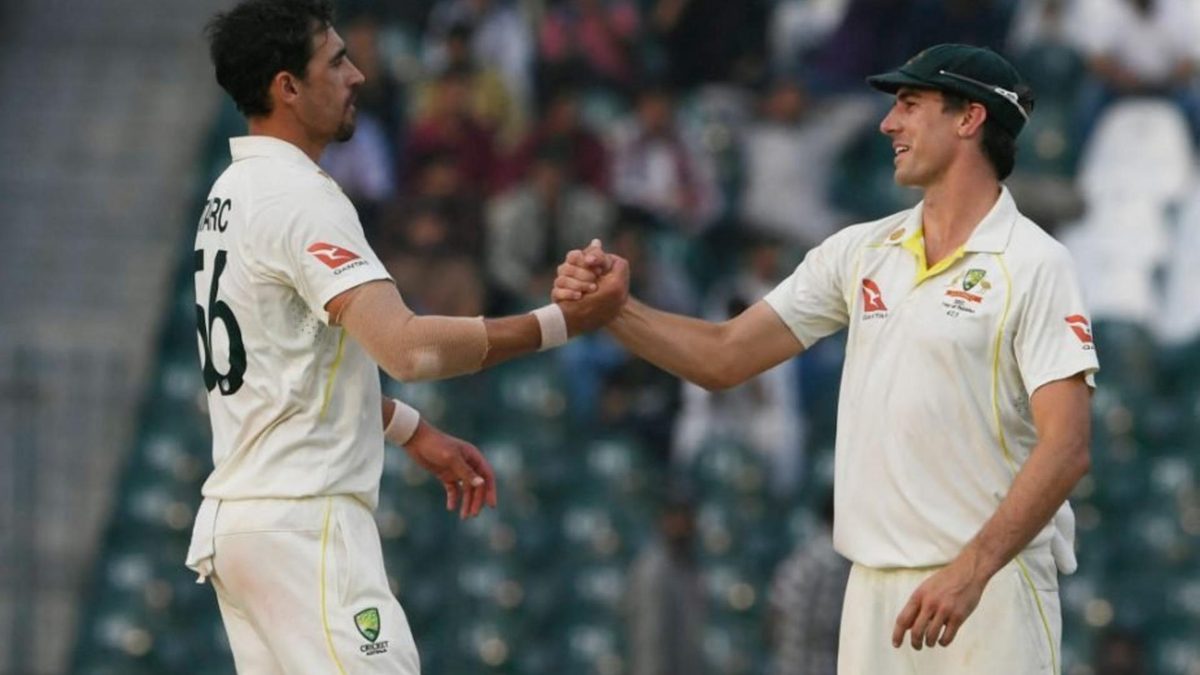
Taha Hashim was in Lahore to watch Australia claim a landmark series win.
Let’s first give Nathan Lyon some props. It’s day five of the match, day 15 of the series, your lot are pressing for the win, and you’re the spinner in charge of getting the job done. It’s not going to be easy. It certainly wasn’t at Sydney (last year and this one too), Brisbane and Karachi.
But Lyon, with more than 400 wickets in the bag, is an off-spinner who deserves a bit more love and respect. He found the footmarks, never relented in the rip and threatened hips with the bounce he extracted. He battled with Babar, one of the best in the world, and won. Figures of 5-83 helped Australia to their first Test series win in Asia since 2011 against Sri Lanka, the tour on which he was presented with his baggy green.
But this is Pakistan, the land of Wasim and Waqar, of Imran and Shoaib, of blood-curdling pace and the magic of reverse swing. We can’t not talk about the quicks. And so to understand how Australia won both the Test and the tour, we’ve got to focus on two men who were beyond captivating at Karachi and Lahore: Pat Cummins and Mitchell Starc.
The pair, alongside the rest of the pack, were initially greeted with a placid surface at Rawalpindi, of the kind that provokes in Test cricket one of its fortnightly existential crises. Why are we here? What are we doing? Is Imam-ul-Haq ever going to get out? Across five days, Australia took just four wickets, one of them a run out.
The next two Tests proved to be less one-dimensional, but the tone for the rest of the month had been set: the bowlers, both tweakers and tearaways, were going to have to be patient, relentless and full of heart. For the quicks, movement through the air with the older ball would be crucial. Periods with the new one brought little jeopardy across the entire series – three of the four leading run-scorers opened the batting. The real drama seemed to begin when the ball was roughened up to give room for a bit of reverse. Edges and toes were under threat.
Together, Starc and Cummins were at the heart of the two most electrifying passages of play in the series. While Lyon struck in the first over after lunch on day three of the Karachi Test, Cummins quickly realised that pace was the way to go with a ball that was 20 overs old. The off-spinner was immediately taken off for Starc, who collected two in two when dismissing Azhar Ali and Fawad Alam. Cummins, on the other hand, toyed with Mohammad Rizwan in a seven-ball battle which produced a dropped catch, an overturned lbw call and a fatal edge. Cameron Green – mightily impressive on his first Test tour – showed tremendous control as Pakistan were bowled out for 148. It took an astonishing rearguard to stop that display from being a match-winning one.
On day three at Lahore, the lead pair outdid themselves. The Test, it seemed, was going nowhere, even after Cummins had taken a tremendous return catch off Azhar in the afternoon. But after more than 100 overs of the Pakistan innings, Starc and Cummins made the ball dance in the evening, inducing a collapse of seven wickets for just 20 runs. Pakistan had been blown away for the second time in the series; this time, Australia weren’t going to be denied the win.
Cummins is immense, his action faultless, his accuracy so supreme it threatens to become boring. Yet this series could’ve been a quiet one for him; mix docile tracks with the new challenge of leading away from home and he could’ve been forgiven for not being at the standard we’ve come to know. Instead, he went to another level, turning persistence into perfection. Twelve wickets at 22.5 made him the standout across both teams. The rankings have not got it wrong. He is the best Test bowler in the world.
Starc, on the other hand, is a victim of his generation; in another era, he’d be the first paragraph. But where he still manages to trump his captain is in the spectacle: tall with a slingy left-arm that blends ferocity with beauty, the sight of Starc coming in from round the wicket to move the ball away from the right-hander was one to marvel at. His numbers are less pretty – eight wickets at 34.12 – but his impact was significant. He signed off Pakistan’s first Lahore innings with a 90mph thunderbolt in the 117th over, demonstrating his ability to keep on coming with stellar pace.
On the batting front, Usman Khawaja was beyond magnificent, his final tally an extraordinary 496 runs at 165.33, his lowest score an unbeaten 44. There was something comforting about watching him; this was a batter, in his mid-thirties, at complete ease with his game, fully aware of his strengths, very rarely troubled. You just knew what you were going to get every innings. Throw in the romance of his return to Pakistan, the country of his birth, and this was a storyline to savour. Others didn’t dominate – Khawaja was Australia’s only centurion in the series – but there were enough contributions to ensure the left-hander was never alone.
Australia deserved the series win. They fought for 14 days, recognising that this was a contest to be played at a completely different tempo to their quick-fire 4-0 Ashes win. They put aside the toil of Rawalpindi, brushed off the disappointment at Karachi and had their reward at Lahore on the 15th. Along the way, there was an impressive supporting cast. Lyon delivered when it mattered. Khawaja was Player of the Series. But those quicks were something else.








